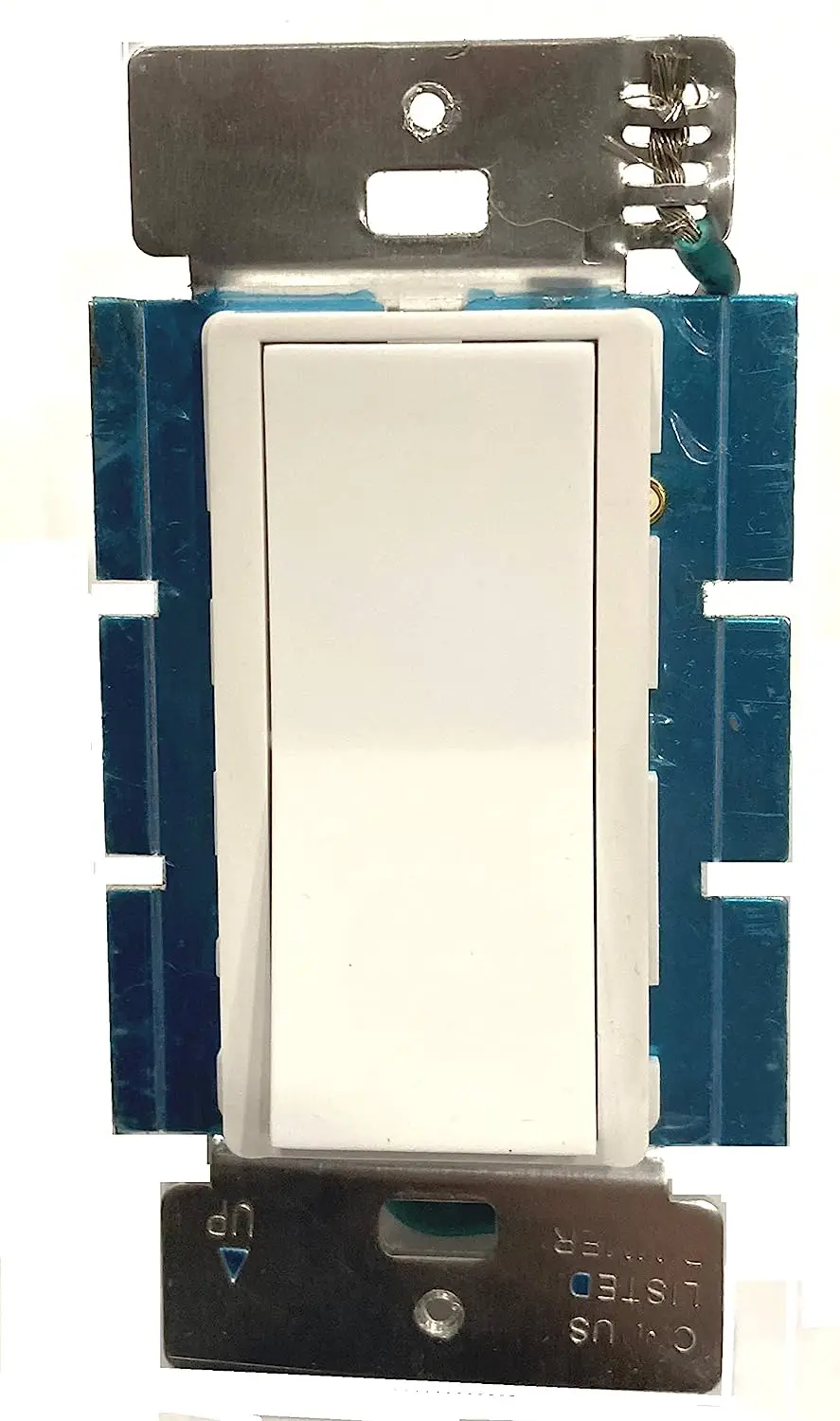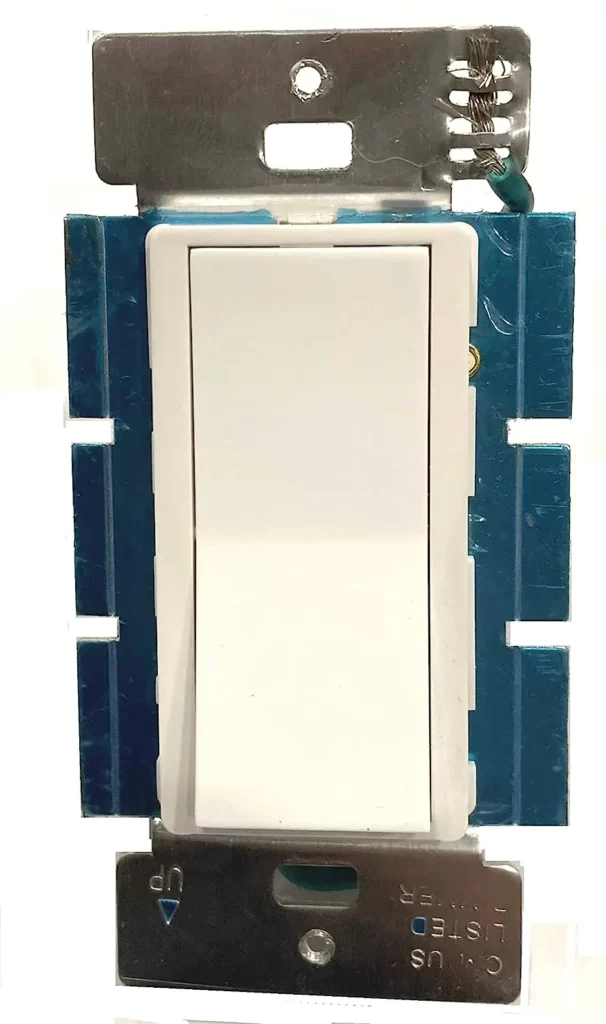A millivolt fireplace switch is an on/off switch used in gas fireplaces. Unlike traditional electrical switches that require main power, the millivolt switch operates on a minimal electrical output. It relies on the voltage the thermocouple generates, a temperature-sensitive sensor, to function.
This self-sustaining feature makes the millivolt switch an excellent choice for gas fireplaces, providing a safe and efficient way to control the unit’s operation.
Try Our Recommendation:
 |
AL-WS-R3 On/Off Millivolt Fireplace Switch | Operation Mode: ON-OFF Current Rating: 2 Amps Operating Voltage: 48 Volts (DC) Brand: ATX-LED Switch Type: Rocker Item Dimensions: LxWxH |
Check Price |
About AL-WS-R3 On/Off Millivolt Fireplace Switch
AL-WS-R3 On/Off Millivolt Switch is designed for low-voltage controls and operates in the ON-OFF mode. With a current rating of 2 Amps and an operating voltage of 48 Volts (DC), this rocker-type switch ensures smooth and efficient control of your fireplace.
Measuring 4.25 x 1.75 x 1.5 inches, this switch boasts a shallow body design, making it compatible with standard junction boxes. Its cleaner function is built-in, making it ideal for use in corrosive environments, providing added durability and longevity.
The AL-WS-R3 switch can easily replace existing fireplace switches, restoring seamless operation to your fireplace setup. It’s also suitable for 3-way setups, adding versatility to its functionality.
The switch operates in the range of 0 to 48 volts and 0 to 2 amps, complying with NEC Class 2 projects for low-voltage applications.
For electronic loads that tend to “spark” during connection, the Inrush Current Limiter (ICL) option comes to the rescue, ensuring a longer switch life and enhanced safety. Installation is a breeze, requiring only a screwdriver for quick setup.
With its outstanding features and compatibility, this Millivolt Fireplace Switch is the perfect solution for your low-voltage control needs.

My Thoughts
As someone who appreciates user-friendly and efficient products, the AL-WS-R3 On/Off Millivolt Fireplace Switch has truly won me over. Its commercial-grade build and rocker switch design makes operating my fireplace a breeze.
I particularly admire the cleaner function, which provides peace of mind in corrosive environments, ensuring the switch’s durability over time.
The range of voltage and current options allows me to use it for various low-voltage control setups, adding versatility to its applications. The inclusion of the Inrush Current Limiter is a thoughtful safety feature, giving me confidence in the product’s reliability and ensuring a longer lifespan.
Overall, the AL-WS-R3 Switch’s performance and user-friendly nature make it a clear winner for me, and I can confidently recommend it to anyone in need of a dependable and efficient fireplace switch.
How the Millivolt Fireplace Switch Works?
The millivolt fireplace switch is directly linked to the pilot light and the gas valve of the fireplace. When you activate the fireplace, the pilot light is ignited, generating a small electrical current in the thermocouple.
This current, in turn, produces a magnetic field that serves to open the gas valve. As a result, gas starts to flow, and the pilot flame remains lit.
Advantages of Millivolt Fireplace Switches
Millivolt On/Off switches offer several advantages that contribute to their popularity among homeowners and fireplace manufacturers:
-
Independence from External Power: Since the millivolt switch operates independently of external power sources, it remains functional even during power outages, ensuring your fireplace remains operational in critical situations.
-
Energy Efficiency: The minimal electrical output required by the millivolt switch translates to improved energy efficiency, helping you save on utility bills.
-
Easy Installation: Millivolt switches are relatively easy to install and don’t require complex wiring, making them a cost-effective option for gas fireplace control.
-
Compatibility: These switches are compatible with a wide range of gas fireplaces, adding to their versatility.
How to Install Millivolt Fireplace Switch?
Installing a millivolt switch is a relatively straightforward process, but following safety guidelines and ensuring you have the necessary tools and materials is important.
The millivolt fireplace system generates a small electrical current using the heat from the pilot flame, which powers the switch. Here’s a general guide on how to install a millivolt fireplace switch:
Materials and Tools Needed:
Millivolt fireplace switch kit (includes a switch, wires, and mounting hardware).
-
Screwdriver (Phillips or flat-head, depending on the screws used).
-
Wire strippers/cutters.
-
Electrical tape.
-
Optional: Drill and drill bits (if required for mounting).
Installation Steps:
Before starting the installation, turn off the gas supply to the fireplace and let it cool down completely. If you’re unsure about any step, it’s best to consult a professional technician.
-
Choose a suitable location to mount the millivolt switch. This is usually near the fireplace or on the wall adjacent to it. Make sure it’s easily accessible and away from direct heat sources.
-
If the millivolt switch kit comes with wires, use wire strippers to remove about 1/2 inch of insulation from the ends of the wires.
-
Use the mounting hardware provided in the kit to attach the switch to the chosen location. If you need to drill holes for mounting, do so carefully, ensuring not to damage any existing wiring or gas lines behind the wall.
-
Identify the two terminals on the millivolt switch. One terminal will be labeled “TH” (thermopile) and the other “TP” (thermopile pilot). Connect one wire to each terminal, making sure they are securely fastened. The specific terminals and wiring colors may vary depending on the switch model, so refer to the manufacturer’s instructions for guidance.
-
Carefully run the wires from the switch to the fireplace’s gas control valve. Keep them away from hot surfaces or moving parts, and use clips or zip ties to secure the wires along their path.
-
Identify the TH and TP terminals on the gas control valve. They are usually labeled on the valve. Connect the other ends of the wires to these terminals, ensuring a proper and secure connection.
-
Once all connections are made, use electrical tape to secure and insulate the terminals and wires, reducing the risk of accidental disconnection or short circuits.
-
With all the connections completed and insulated, turn on the gas supply and test the millivolt switch. The switch should be operational, allowing you to control the fireplace’s pilot flame.
-
Double-check all connections, ensuring they are tight and secure. Verify that the switch works as intended by turning the fireplace on and off several times.
Please remember that working with gas and electrical components can be dangerous. If you’re unsure about any part of the installation process, it’s always best to seek assistance from a qualified technician to ensure your safety and the proper functioning of the fireplace.
Millivolt Fireplace Switch not Working Troubleshooting Common Issues
Despite their reliability, millivolt fireplace switches can encounter problems over time. Here are some common issues and troubleshooting tips:
-
If the pilot light keeps going out, it may indicate a faulty thermocouple. Cleaning or replacing the thermocouple could resolve the issue.
-
A dirty or misaligned pilot assembly may prevent the valve from opening. Cleaning and realigning the pilot assembly might fix this problem.
-
Check the connections and ensure they are secure. Corroded or loose wires can cause weak or no output from the millivolt switch.
-
If you use a wall switch to control the fireplace, ensure it functions correctly. Faulty wiring or a damaged switch might be the cause.
Millivolt Switch Maintenance Tips
Performing regular maintenance can significantly extend the lifespan of your millivolt fireplace switch while ensuring your gas fireplace operates smoothly.
Periodically clean the pilot assembly to remove any dust or debris that might interfere with the switch’s functionality.
Routinely inspect the connections and tighten any loose wires to ensure proper electrical contact.
Check the Thermocouple for signs of wear or damage and replace it if necessary.
Keep the area around the millivolt switch clean to prevent dust and dirt from affecting its performance.
You May Also Like To Read:
FAQs
Is there a special switch for a gas fireplace?
Yes, gas fireplaces often use a specialized switch that can operate with low voltage, such as a millivolt switch or a specific wall switch designed for gas fireplaces.
What does millivolt mean on a fireplace?
Millivolt on a fireplace refers to the low voltage (in the millivolt range) produced by a thermopile or thermocouple that powers the gas valve and allows for remote control operation without external electricity.
How many volts is a fireplace switch?
A fireplace switch typically operates on a low voltage, usually around 750 millivolts (0.75 volts), generated by the thermopile.
What are millivolt controls?
Millivolt controls are mechanisms in gas fireplaces that use a small amount of voltage (millivolts) generated by a thermopile to control the gas valve and ignition system, enabling the fireplace to function without external electrical power.
My Final Thoughts
The millivolt fireplace switch is a reliable and efficient component that plays a crucial role in the operation of gas fireplaces. Its ability to function independently of external power sources, easy installation, and energy efficiency make it a preferred choice for homeowners and fireplace manufacturers alike.
Affiliate Disclosure: Fireplaceadviser.com is a participant in the Amazon Services LLC Associates Program. We may earn a commission when you click on certain links on this site and purchase.

Hello!! I am Jamal Khan. I often fix my home electric heaters and gas stove problems and research the common issues in the heating units to improve my knowledge and expertise. The aim of establishing fireplaceadviser.com is to share my expertise and knowledge with my audience.










The “benefit” of energy efficiency isn’t – the current to the switch comes from the thermocouple – there is ZERO draw from the grid.
Thanks, Randy, for your valuable suggestions.